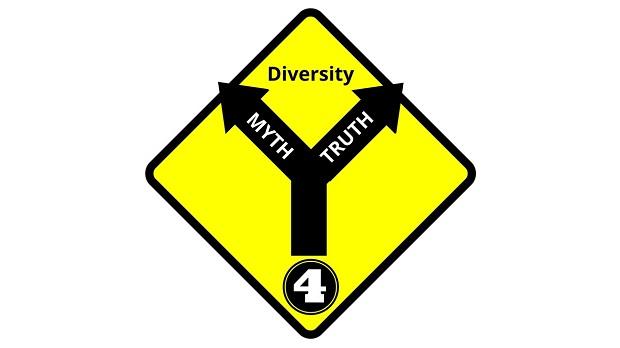
The number of times I’ve shouted both inwardly and aloud, “I’m not a robot!” over the course of my career is too many to count. For years I have felt this constant pressure to do more and work harder, longer, and better, because I, like most Black people, am all too familiar with the adage “You will have to be twice as good to get half of what they have.” After years of being asked by employers to put in hours outside of my schedule, or volunteer to work beyond my scope, it has taken me a while to recognize that I could set my own boundaries. For the sake of my mental health, I have adjusted to saying “no,” even though at times I was made to feel as if doing so would impact my employment. Yet that is the essence of hustle work culture, particularly within the nonprofit sector: the constant, daily push to prove one’s worth in an organization at any cost.
Job security alone pushes people to churn out products and produce results, often ignoring their own needs and well-being. Profit and incentive are the essence of a capitalist framework. Employees in a capitalist system are expected to constantly provide evidence of their contribution to institutions to prove their financial value. While this framework might benefit the larger institution, this model fails to recognize many things, most prominently the basic fact that we are people first before we are employees. Many institutions using a capitalist model lose sight of this as they strive to improve the external face of their organization while forgetting that their staff are a part of the communities that they serve.
I have worked in many types of institutions in the arts and culture sector: from higher education to government agencies to nonprofits. While there have been variations in the benefits packages that I’ve been offered, there were often standard practices at all of them. Each institution where I was a full-time employee provided me with vacation days and sick days, though the number differed widely. Each provided me with health care, yet the coverage and premiums were drastically different. And while the majority of them provided retirement benefits, the employer contribution varied from 6 percent to nonexistent.
One way a nonprofit organization could begin shifting away from a capitalist framework is to recognize that each individual comes into a workspace with their own needs and perspectives. In fact, many employees are hired because of their unique perspective and due to an institutional commitment to valuing difference. With all staff bringing different needs into a workplace, there ought to be an institutional understanding that each may need different things to be successful. Employers can recognize the unique needs of each employee by building a work culture to meet each of their employees where they are with a suite of benefits that they can utilize in a way that best serves them as people.
Employee burnout happens for a variety of reasons, but one of the key drivers of burnout is employers not considering the daily life stressors that each employee has to manage: whether that is the costs associated with health care or child care, previous workplace trauma that hasn’t been addressed, feeling stagnant, feeling disconnected working remotely, or the multitude of other challenges facing our nonprofit workforce. Often, an organization’s standard benefits package only truly works for some employees, providing a cookie-cutter framework that may not serve the needs of the individuals. This framework often assumes employees have no pre-existing medical conditions, a two-income household, and a host of other baselines centered in white supremacy culture and the equating of work to worth.
In one instance, I worked at a nonprofit organization where I discovered that a white man with the same title and job description as I had, and who started the same time as I did, had a salary significantly higher than mine. When I raised this with the organization’s leadership, I was first criticized for having salary conversations with my colleagues, as if not talking about our pay meant everything was equal. Then I was told that his salary was higher because he was not participating in the employer health care benefits, seemingly making the benefit less of a benefit and more of a quid pro quo. Moreover, when we were each hired, at the time of salary negotiation I was told the organization could not exceed their initial offer because there were senior staff making less than what I was asking for; yet my white male counterpart did not meet that same barrier when negotiating his salary. Instead, he secured more than the same senior staff member, a white woman, whose pay had limited my salary.
Essentially, by utilizing his wife’s employer-sponsored health care, my colleague at the time had the significant privilege to be able to decline the health care offered by our organization. I, however, being a single person without that option was penalized for not entering the organization while living in a “standard” two-income household.
To fully support employees and reduce the number of situations like the one I found myself in, organizations should consider shifting to a people-first benefits suite. This change would successfully attend to unique employee needs and could include: access to trauma-informed mental health/physical health care, child care support beyond the federally required FEPLA parental leave, annual updating to job descriptions to ensure growth and facilitate potential restructuring as needs shift, sabbatical opportunities for employees, remote work funding for home office or coworking space support, and unlimited sick time. The key to a shift like this would be to connect with each employee individually to identify their needs and ask how employers could best support them in their personal lives through valuing them as people in their professional ones.
Putting people first would cause a true shock to work cultures, not only in the nonprofit space but across the American workforce more generally. One way some companies have transitioned to better supporting employees as people is by encouraging work-life balance through implementing a four-day work week. Other efforts can be seen through viral calls to action like #ShowUsYourLeave, which highlights just how broad and necessary these conversations about employee care are. You can find that LinkedIn call to action still gaining momentum, and spotlighting companies that have reconsidered their parental leave, bereavement classification and leave, and sick or wellness days.
Employee benefits packages are bigger than just increasing leave allotments, and institutions need to assess all components of what they offer as benefits and who those “benefits” are really designed to benefit. A human-centered work culture that puts our realities as people ahead of our status as employees must recognize that not every human has the same lived experience or working style. It is an understanding of each individual’s communication style, needs, productive environment, and capacity. The value of a human-centered approach, particularly in the area of overhauled benefit packages, has the potential to outweigh the cost of implementation. While there are nonprofit organizations that are journeying down this path of reflecting on and re-envisioning how to provide expanded support to their employees, there’s more work to be done to counteract the realities of the capitalist system we find ourselves embedded in that prioritizes product over people.


















